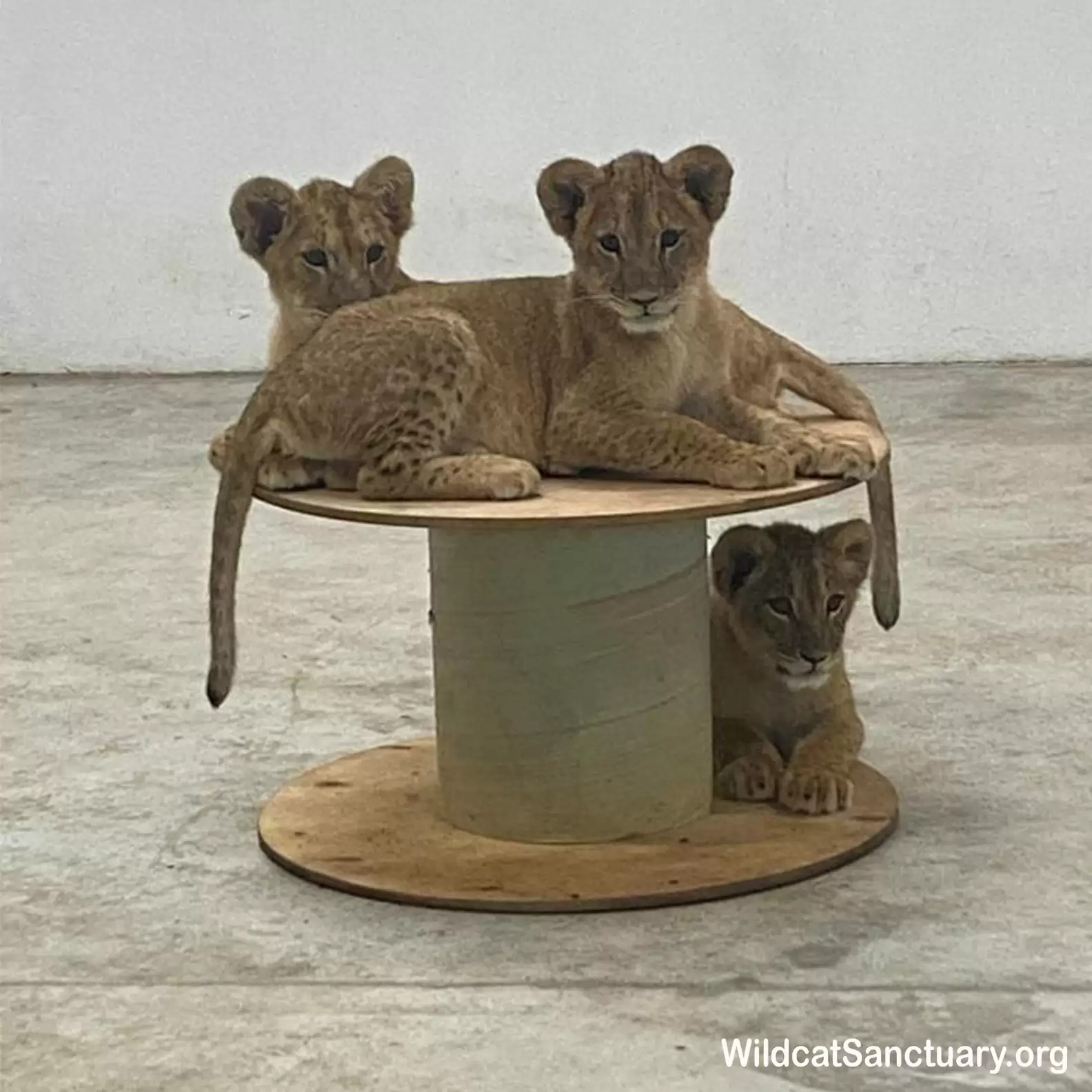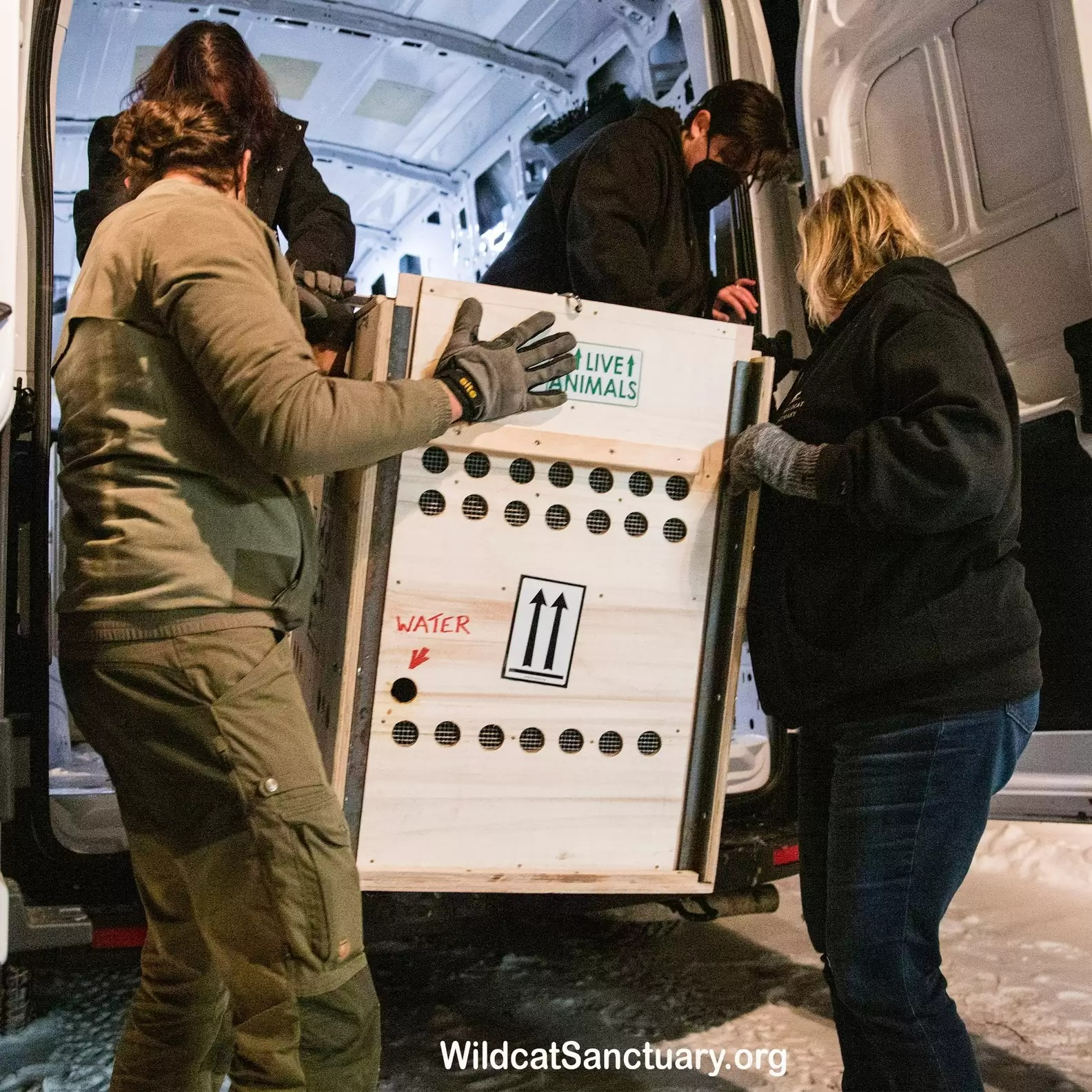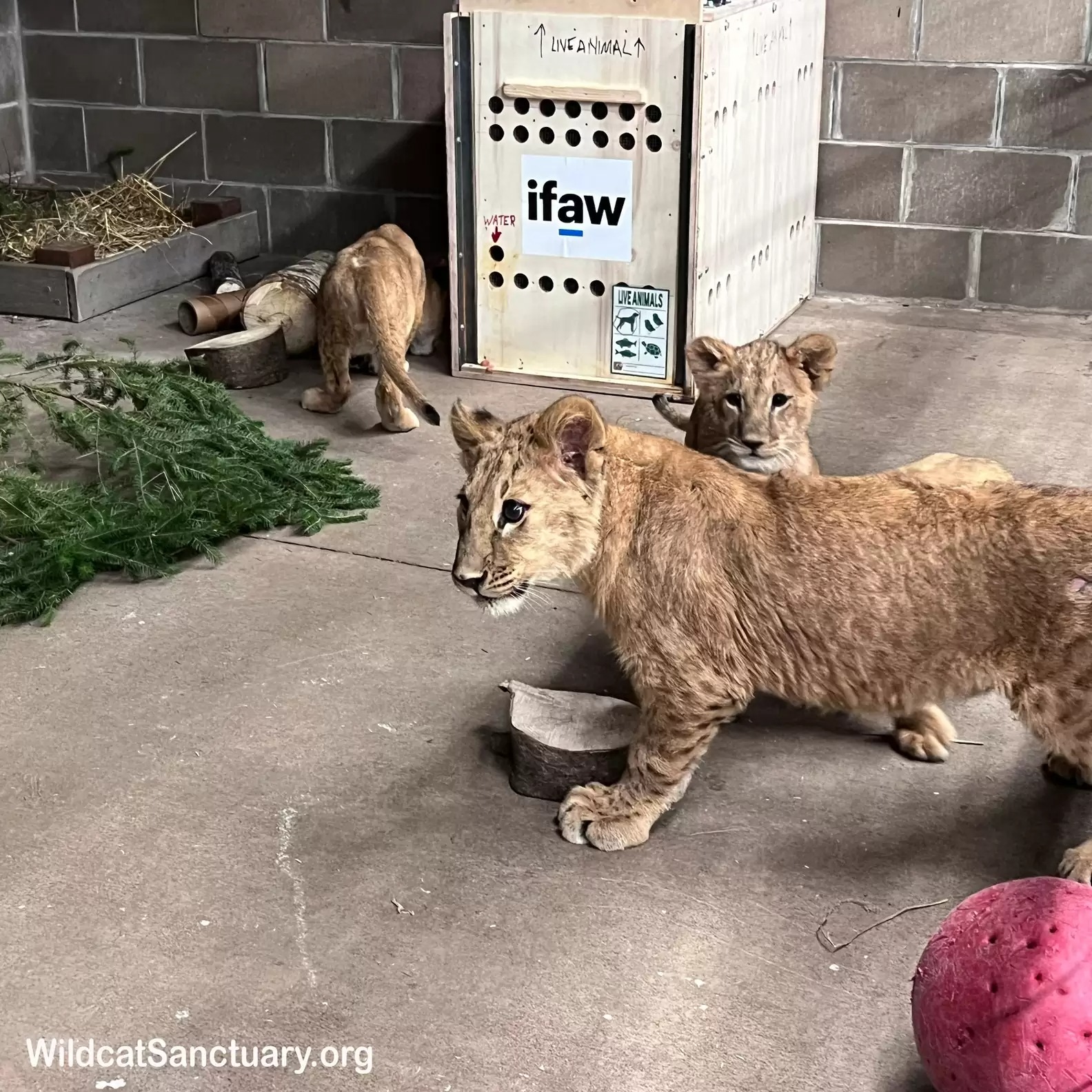When lion cubs Prada, Taras, Stefania and Lesya first explored The Wildcat Sanctuary (TWS) in Minnesota, everyone breathed a deep sigh of relief. After several days of traveling from their original home in Ukraine to the United States, the group of vulnerable cubs were finally safe.
The cubs, all under a year old, were rescued from animal trafficking in Ukraine. They were receiving the care they needed at a rehabilitation center in the Eastern European country when war broke out, creating dangerous conditions for the baby lions.

“The cubs were surrounded by heavy shelling,” said Tammy Thies, executive director of TWS. “Rescue groups often had no power or electricity, yet they were all dedicated to getting these cubs to safety.”
The rescue groups in charge of the cubs contacted the International Fund for Animal Welfare (IFAW) for help, and that’s when TWS stepped in.
“Our team has experience in international big cat translocations,” Thies said, “but none during such a conflict.”

Nevertheless, Thies agreed to give the four young cubs a new home. But getting them from Ukraine to Minnesota won’t be easy.
First, Taras, Stefania and Lesya were transported from Odesa to a shelter in kyiv. There they met Prada, who joined the pack of bear cubs on their journey. After a few days of rest in kyiv, IFAW transported the lions to Ponzan Zoo in Poland, from where they could be exported to sanctuaries in the United States and Europe.
“This trip took 14 hours on the road, plus more than 8 hours of waiting at the border checkpoint,” Mr Thies said.
Nevertheless, the cubs managed to cross from Ukraine to Poland and spent a month in quarantine before completing their journey to Minnesota.

During the quarantine, IFAW and TWS worked together to obtain import permits from US Fish and Wildlife.
As soon as Mrs. Thies obtained the American permits, she traveled to Poland to accompany the cubs on their journey to their new home. She spent a few extra days at Ponzan Zoo building crates for the cubs and obtaining permits from Poland to export them.
Four days later, Thies and the pack of cubs drove to Warsaw Airport, a four-hour drive from Ponzan Zoo, hoping to catch a flight to Chicago. After undergoing thorough inspections by customs and other wildlife veterinarians, the group of lions and their dedicated rescuers were finally given the all-clear to leave Europe.

“The 10-hour flight from Poland to Chicago was the first time we could all breathe a sigh of relief,” Thies said. “We didn’t know the rescue would take place until we finally got on the plane in Warsaw heading to the United States.”
As for the cubs, they were less affected by the trip than Thies had expected.
“Just like us, they took advantage of the flight to get some much-needed sleep,” Mr Thies said.
After 10 a.m., the cubs and their rescuers landed safely in Chicago.
“It was raining, it was windy and it was snowing,” says Thies. “But of course, why wouldn’t he be? The journey was never going to be easy”.
The cubs arrived at TWS around midnight, about 36 hours after beginning their journey out of Ukraine. As soon as they arrived, they immediately began to absorb their new environment.
“They immediately explored the interior spaces and the exterior habitat,” Thies said.

Although the cubs were placed in a totally new environment, they seemed to acclimate immediately.
“The cubs weren’t scared and adapted really well,” Thies said. “They are supported by each other and I think that has boosted their confidence.”
Since joining TWS, the cubs’ personalities have blossomed. According to Thies, Taras is a curious cat and an inveterate climber. Prada is the biggest of the four, but it’s edgier than its salvage siblings. Lesya is the smallest of the group, but he is much louder than the others. And Stefania became the group’s peacekeeper.

It’s so cute to see her catch up on her big ‘sister’,” TWS wrote in a Facebook post.
Although they now have warm interior chambers, the group of cubs love running around in their large habitat in the Pride Prairie section of the sanctuary, especially when there is snow.

The cubs will live to the end of their lives at Wildcat Sanctuary, Minnesota, where they will receive all the care and love they need for over 20 years.
“Maintaining a big cat costs us $10,000 a year, so it’s an expensive commitment,” Ms. Thies said, “but it’s worth seeing them live in the wild in a safe.”



